Chalukyan Chronicles: Aihole, Cradle of Indian Temple Architecture
- Sai Venkatesh Vemuri
- Aug 11, 2024
- 9 min read
Updated: Nov 12, 2024
The historical city of Aihole, once the major cultural and religious center of the Chalukya Kingdom, is renowned for its ancient temples and rock-cut caves. It is often referred to as the "Cradle of Indian Temple Architecture" due to its numerous early temple structures and architectural experimentation.

Table of Contents
The towns of Badami, Pattadakal, and Aihole lie in the Bagalkot district of Karnataka. Badami, the largest of the three, serves as the entry point for exploring the renowned Chalukyan monuments. Aihole, located 35 kilometers from Badami, is the farthest. Pattadakal is conveniently situated midway between the two. While there is no set sequence for visiting these sites, I recommend starting with Aihole. Known as the cradle of Indian temple architecture, Aihole showcases early experiments in rock-cut caves and temples. This allows you to appreciate the visible architectural advancements perfected in Badami and Pattadakal.
Aihole
The ancient temples at Aihole showcase the early stages of the South Indian temple building tradition, earning the site its title as the cradle of South Indian architecture. It was the experimentation ground for early Chalukyan kings from 5th to 8th Century AD. According to legend, the name "Aihole" is derived from "Ai Holi" (meaning "Ai, the river")—a reference to Parashurama washing his blood-stained axe in the Malaprabha River, turning its waters red.
Durga Temple Complex

Durga Temple
The Durga Temple, dating back to the 6th-8th centuries, is renowned for its unique architectural design and intricate carvings. Despite its name, the temple is not dedicated to the goddess Durga but is named after the fortification (Durg) that surrounds the temple complex. This temple is originally dedicated to Aditya, the sun god. One of its most distinctive features is the semi-circular apsidal shape at the back, a rarity in Hindu temple architecture that reflects the influence of earlier Buddhist chaitya halls. This blend of styles and the temple's detailed sculptures make it a fascinating study of early Indian architecture.

The Durga Temple is built on an elevated platform, enhancing its grandeur. At the front, a mandapa (hall) features intricately carved pillars showcasing various deities. Surrounding the sanctum is a pradakshinapatha (circumambulatory path), allowing devotees to walk around the sanctum.

After ascending a flight of stairs, you'll arrive at the Mukhamandapa. The entrance door to the Mukhamandapa, leading to the main hall, is an exquisite example of intricate craftsmanship. At the center of the doorframe is a stunning carving of Garuda, the mythical bird. The doorframe is further adorned with elaborate patterns featuring motifs of flowers, pillars, dancers, and serpents, creating a captivating and richly detailed display of artistry.
One of the most captivating features of the Durga Temple is the array of intricate sculptures of gods and goddesses that adorn its walls and pillars. These detailed carvings include:
Asthabuja Shiva with Nandi
Vishnu riding Garuda
Narasimha, an avatar of Vishnu in the form of a lion
Varaha, an avatar of Vishnu in the form of a boar
Harihara, a combination of Shiva and Vishnu
Mahishasura Mardhini, the fierce form of Goddess Durga
Ardhanarishvara, a half-male and half-female depiction of Shiva and Parvati
Narasimha slaying Hiranyakashipu
The temple's artwork vividly depicts scenes of daily life, including couples in various stages of courtship. Additionally, the walls and pillars are adorned with intricate carvings illustrating tales from epics such as Ramayana and more, bringing the rich tapestry of Indian mythology to life.
Within the temple, visitors can observe a fascinating progression in the craftsmanship of the pillars, ranging from those with minimal carvings to others adorned with intricate designs on one, two, three, and finally all four sides.
The temple features window shades in various shapes and patterns, including swastikas, star, circular designs and more, around the structure. These intricately crafted windows provide essential ventilation and natural light to the sanctum, enhancing the temple's ambience.
The ceiling of the temple features exquisite carvings on stone slabs, including the Matsya Chakra (Fish Wheel) and the Coiled Nagaraja (The king of Serpents.)
Adjacent to the temple, you can find another intriguing structure believed to be the original entrance to the temple complex.

Shiva Parvathi Temple
The Shiva Parvati Temple, situated right beside the iconic Durga Temple. This temple features a sanctum, a hall, and a small mandapa at the front. The structure is topped with a sloped roof, adding to its simplicity and aesthetic appeal.

The interior of this temple showcases remarkable craftsmanship, with four intricately carved pillars providing both structural support and aesthetic elegance.

Gaudar, Ladkhan and Suryanarayana Temples Complex
Surya Narayana Temple
The Suryanarayana Temple built in the 8th century is distinguished by its curvilinear shikara, features a captivating statue of Surya, the sun god, within its garbha griha (sanctum). While the temple’s outline remains intact, much of its intricate detailing has unfortunately suffered damage over time. The temple consists of a sanctum, hall and an open porch.
Surya is depicted holding a lotus flower in each hand, standing in a chariot drawn by seven horses carved at the base. The seven horses represent the seven days of the week, symbolizing the passage of time, and Surya's journey from dawn to dusk.

Lad Khan Temple
This is one of the oldest temples in the region, named after a Muslim commander under the Adil Shahi Sultan who briefly stayed there approximately a thousand years after its construction. The temple is built on a square platform and features a two-storied structure.

In this early stage of architectural development, the shikara, or tower, had not yet evolved. Instead of a traditional shikara, this temple features a small shrine built directly into the mandapa ceiling. Originally believed to be dedicated to Vishnu and Surya, this unique design reflects the transitional phase of temple architecture, showcasing a blend of simplicity and early innovation.
One of the significant inscriptions you will encounter here is the sigil of the Chalukyas, which includes the distinctive symbols of a Varaha (Boar), Shankam (conch), Chakra (Wheel), and a mirror. This emblem encapsulates the essence of Chalukyan identity and power, reflecting their royal insignia and cultural symbolism.
The sanctum houses a Shiva linga, accompanied by a majestic Nandi statue facing the deity. Surrounding the mandapam are intricately designed perforated windows in various shapes and sizes, allowing ample sunlight to filter through and illuminate the interior. These windows not only enhance the temple's aesthetic appeal but also create a serene and spiritual atmosphere inside the mandapam.
The site also features a few intriguing artifacts, such as a stone ladder designed to access the roof and carvings of traditional Indian game boards on a stone platform. These elements provide a unique glimpse into the daily life and recreational activities.
Guadara Temple
This temple, though smaller in size, bears a resemblance to the Lad Khan Temple. It features a rectangular sanctum and a hall supported by intricately carved pillars. The roof is flat at the center with slopes on all four sides, creating a distinctive architectural profile. It is dedicated to Goddess Durga.

Chakragudi and Badiger Temple
Chakra Temple
This temple features a distinct Rekha-Nagara (tower) style shikhara atop the sanctum, giving it a prominent vertical profile. Known as the Chakra Temple due to the circular Amalaka crowning the tower, it comprises a sanctum, a hall, and an open mandapa.
The sanctum's doorframe is intricately carved, featuring Garuda holding two snakes, with a Linga placed inside.

Next to the temple lies a large stepwell, designed for water storage. The walls of this stepwell are adorned with a few carvings, adding both functionality and aesthetic beauty to the structure.

Badigera Temple
Badigera Temple is renowned for its distinctive pyramidal tower, which resembles a stack of squares with gaps in between, creating a unique architectural design. At the center of it, is an idol of Surya, the Sun God. Much of the intricate artwork has succumbed to the ravages of time.

Archaeological Museum
The Archaeological Museum, nestled within the Durga Temple complex, offers a fascinating glimpse into the region's rich historical and cultural heritage. This museum houses an impressive collection of sculptures and inscriptions uncovered during excavations in and around Aihole.
The museum houses 381 antiquities mainly comprises of stone sculptures of Brahmanical, Jaina and Buddhist faith, fragmentary carved architectural members, inscriptions, hero stones, sati stones, etc. The museum divided into six galleries and an open air gallery.
Hucchimalli Temple Complex
Just 2 kilometers from the Durga Temple lies the Hucchimalli Temple complex. Perched on an elevated platform, this temple features a Mukhamantapa (front hall), a Rangamantapa (assembly hall), and a Garbhagriha (sanctum). The temple is adorned with various sculptured figures that showcase the artistic excellence of the era. The temple is dedicated to Lord Shiva.

Inside the sanctum, a lingam stands as the focal point of worship. According to tradition, this lingam symbolizes the Hindu trinity: the square base represents Brahma, the Creator; the octagonal column signifies Vishnu, the Preserver; and the circular top embodies Shiva, the Destroyer.
Adjacent to the main temple stands a smaller monument, constructed around the 11th century. This structure features a distinctive stepped Shikhara.

Opposite the main temple lies another smaller temple, of which only the hall remains. This partially preserved structure is believed to have been a architectural experimentation before constructing full-scale temple.

Directly opposite the main temple, there is a water tank with steps leading down to the water's edge. The walls of this tank are adorned with sculptures of various deities.

Among the temple’s most exquisite carvings is the depiction of Lord Kartikeya gracefully riding a majestic peacock. This artwork stands out for its intricate detailing and vibrant expression, capturing the divine elegance of the deity.

Ravanaphadi
Located just a kilometer from the Durga Temple complex, Ravanaphadi is a fascinating rock-cut shrine dedicated to Lord Shiva. This temple is assigned to the 6th century.

This ancient temple features four exterior pillars that support its robust design, and is guarded by statues of Padmanidhi and Shankhanidhi, who stand as protectors of the shrine.

The interior of Ravanaphadi houses a sanctum dedicated to Lord Shiva. This central chamber is designed to house the Lingam, providing a focal point for worship and devotion.

The shrine features elaborate carvings that include various deities and mythological scenes. These sculptures reflect the artistic prowess of the Chalukyan period.

One of the key statues inside Ravanaphadi is a stunning depiction of the ten-armed Nataraja, portraying Lord Shiva in his cosmic dance. This central figure is intricately carved and stands out for its unparalleled size and detail. Accompanying Nataraja are finely detailed statues of Ganesha, Kartikeya, and Parvati, each rendered with remarkable artistry. The grandeur and meticulous craftsmanship of this ensemble underscore the shrine’s spiritual and artistic significance.

Here are the notable statues and carvings inside Ravanaphadi:
Varaha: The boar-headed avatar of Vishnu, depicted in a dynamic pose, symbolizing his role in rescuing the Earth from the demon Hiranyaksha.
Mahishasuramardini: The fierce goddess Durga vanquishing the buffalo demon Mahishasura, representing her power and protective nature.
Ardhanadeshwara: The combined form of Shiva and Parvati, illustrating their inseparable unity and divine partnership.
Shiva and Harihara: A composite deity combining aspects of both Shiva and Vishnu, symbolizing their shared divine essence.
Shiva and Parvati with Sage Bhringi: The divine couple accompanied by Sage Bhringi, known for his intense devotion to Shiva alone.
Indira on Airavat: The king of gods, Indra, riding his celestial elephant Airavat, emphasizing his majestic and authoritative presence.
Vishnu on Garuda: The supreme deity Vishnu mounted on his mythical eagle vehicle, Garuda, symbolizing divine strength and protection.
Inside the Garbhagriha of the shrine, you’ll find a monolithic Shivalinga. Just outside the cave, a dedicated platform is set up for Nandi, the sacred bull and mount of Shiva.
I've only scratched the surface of what Aihole has to offer. This remarkable area, rich in historical and architectural treasures, is home to over a hundred temples. Whether you have just a day or are able to spend weeks—or even months—exploring, Aihole offers endless opportunities for discovery and immersion in its ancient heritage.

And that wraps up this journey! Be sure to explore more stories on this blog. I'd love to hear from you, so feel free to connect through the contact section.
Essential Information
Who should visit?
Architecture Buff
Spiritual Seeker
Weekender
Budget Explorer
When to visit?
Recommended - October to March
Avoid summers at all costs
Where to Stay?
Hotel Mayura by KSTDC
There are limited stay options in Aihole, it is recommended to Stay at Badami or Bagalkote
What to do?
Explore below monuments for sure.
Durga Temple
Temples of Gaudar, Ladkhan, and Suryanarayana
Chakragudi and Badigera Temples
Archaeological Museum
Huchchimalli Temple Complex
Ravanaphadi: Rock-Cut Shrine
If time allows, be sure to explore the numerous other historical temples scattered throughout the town.
How to travel?
By Road: Aihole is approximately 35 km from Badami and 40 km from Bagalkote. Both towns are accessible via bus or train from major cities like Hyderabad, Bengaluru, and Hubballi.
By Air: The nearest airport to Aihole is Hubli, which offers flights from major cities.
Local Transport: Auto-rickshaws and cabs are available for travel within and around Aihole.
Package Tours: KSTDC offers package tours from major cities like Bengaluru, which can be booked through their website.
Recommended Trip Duration
2 Days / 1 Night
Estimated Trip Budget
~INR 7,500 per Person*
* Excluding transportation costs via flight or train, and if you'll be traveling around via public transport or in a group of four using a car.
_PNG.png)



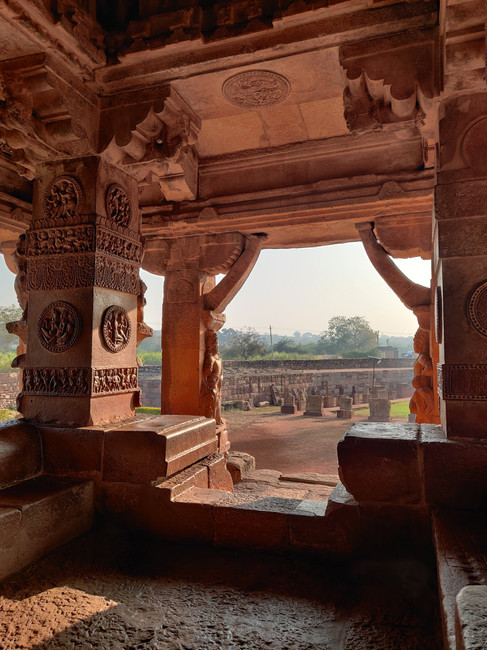







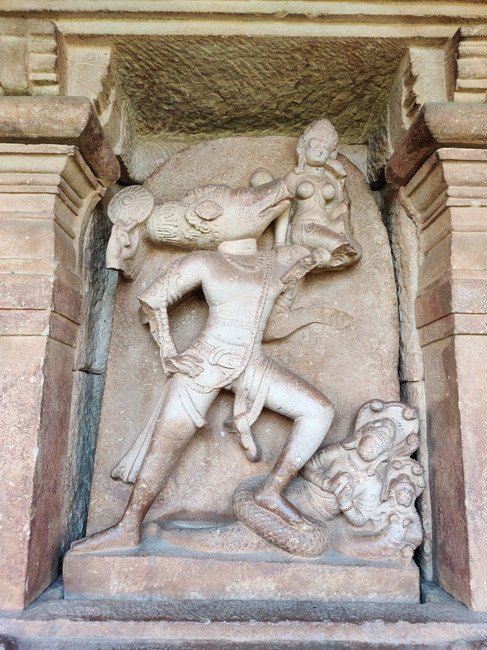















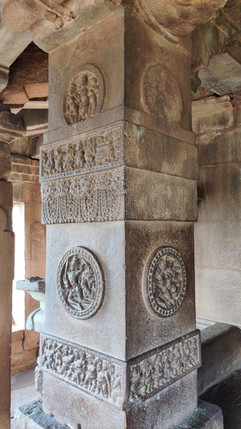























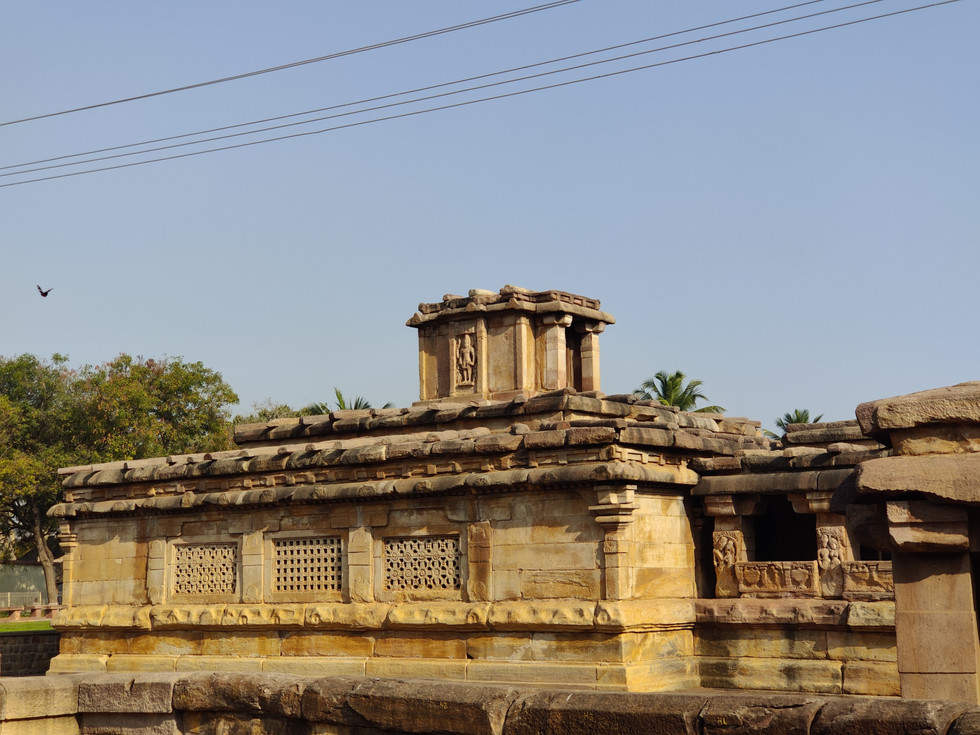





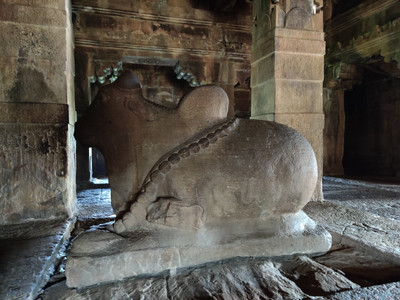









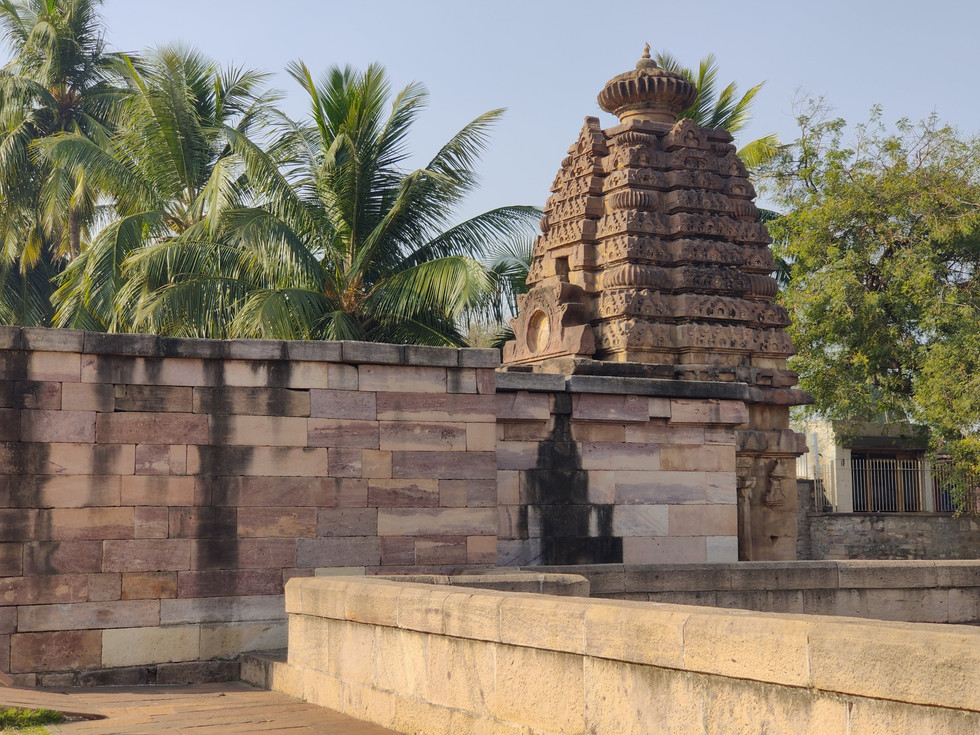





















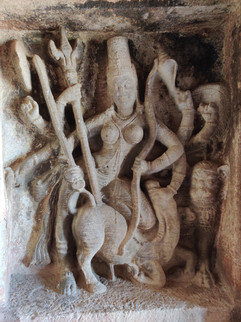











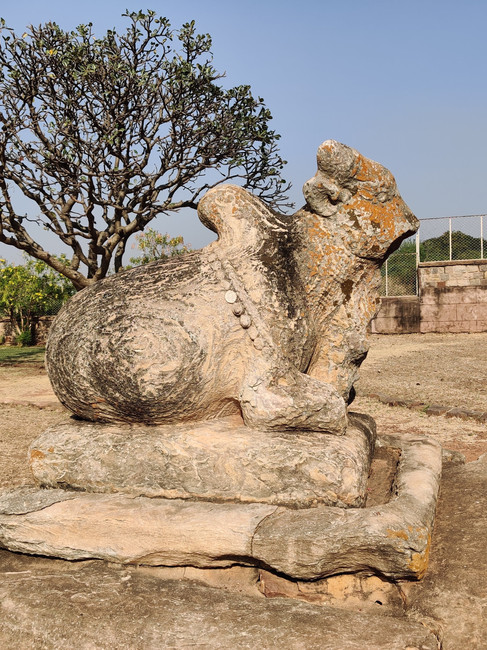



Comments